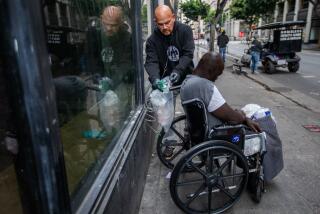Emergency treatment in cardiac arrest: More isn’t always better
- Share via
More -- and newer -- isn’t always better in medicine.
We imagine it’s a good idea to pay for a whole-body CT scan so that every last defect in our body can be detected and treated promptly, so we subject ourselves to radiation but also to treatments for abnormalities that would never have harmed us.
Or we assume that the latest drug off the block must be better than the old, tired ones, but that isn’t always so: An eight-year trial found that an older diuretic drug was more effective in treating blood pressurethan two newer, more costly drugs, and another trial found that newer antipsychotic medications were no more effective than older ones and raised the risk for diabetes and obesity.
Here’s another example, from a study just published in the Journal of the American Medical Assn. When people outside of hospitals go into cardiac arrest, their brains are better preserved one month out if emergency medical responders use an older, lower-tech method called bag-valve-mask ventilation in conjunction with CPR to preserve the supply of air to the lungs than if they try to manage the situation more aggressively.
The study, which looked at the outcomes of 649,359 sudden cardiac arrests in Japan, compared the older method -- the so-called ambu bag, in which a bag attached to a mask forces air into the lungs when it’s squeezed -- to two other techniques. One is endotracheal intubation (in which responders snake an airway tube through the mouth down to the trachea) and the other is use of supraglottic airway devices (these are inserted through the mouth to sit in the pharynx and deliver air to the patient).
In all, there were 367,837 cases of bag-valve-mask ventilation, 41,972 endotracheal intubations and 239,550 cases where supraglottic airway devices were used.
The authors, Dr. Kohei Hasegawa of Harvard Medical School/Massachusetts General Hospital and colleagues, found that those who were treated with the latter two methods by emergency responders fared worse, not better, than those treated by the old-fangled ambu bag. At one month, they were significantly more likely to score worse in neurological tests (scoring either as “severe cerebral disability,” “vegetative state” or “death”).
Why would this be? The researchers say they don’t know for sure. And though they tried their best to adjust the stats in their study to account for such factors as different severity of patients treated one way or the other, they hold out the chance that this could be a factor in the differing outcomes.
Still, they offer a number of reasons why the more involved techniques could be harming patients instead of helping them.
For one thing, they say, time spent inserting the devices could get in the way of performing the life-saving chest compressions of CPR. For another, the endotracheal tubes are tricky to insert and mistakes can be made (inadvertently threading the tube into the esophagus, for example). But there are other potential downsides: Pushing too much air into the lungs can build up pressure in the chest cavity and interfere with the supply of blood to the brain or heart, and providing too much oxygen to the body can be toxic.
The authors stop short of saying the techniques should be dumped in these emergency settings, but they do call for a good, hard look at the methods and some investigations into whether the techniques should be reserved for a subset of patients who would be helped by them.
And they call for a clinical trial in which patients are randomly chosen to receive ambu bag treatment or one of the other methods. (Since their trial didn’t randomly select the methods to be used on patients, it’s always possible that the three patient groups weren’t the same despite the authors’ best efforts to look for differences -- and thus that the superior outcome for those who got the ambu bag was because those patients were in less critical condition.
Finally, it may be tempting to suppose that what goes for Japan does not go for here. But the authors note that emergency responders receive more training in endotracheal tube insertion than those in the U.S.: They must perform 30 successful intubations to be credentialed in the method, compared with five successes for emergency responders in the U.S.
In an accompanying editorial, Drs. Henry Wang (University of Alabama) and Donald Yealy (University of Pittsburgh) noted that the study wasn’t the first to report potential downsides of endotracheal intubation and supraglottic airway devices in this emergency setting for people with cardiac arrest -- but that the study was notable because it was “large, methodologically rigorous, and compelling.”
And, they write, the study “sends a clear message. Emergency medical services professionals across the world must engage in the scientific process” in the form of a clinical trial. “Absent this investment, the emergency medical services community risks turning a blind eye and embracing ineffective or harmful airway interventions. Patients with cardiac arrest and the out-of-hospital rescuers who care for them deserve to know what is best.”
Cardiac arrest is a condition in which the heart stops beating properly and the body is quickly starved of the oxygen. It is distinct from a heart attack, which is caused by blockage of the blood supply to the heart.
Survival rates for cardiac arrests that occur outside of the hospital have improved but are still very low: about 8% to 10%. About 375,000 to 390,000 people in the U.S. have an out-of-hospital cardiac arrest each year.
Learn more about cardiac arrest at the website of the American Heart Assn.






